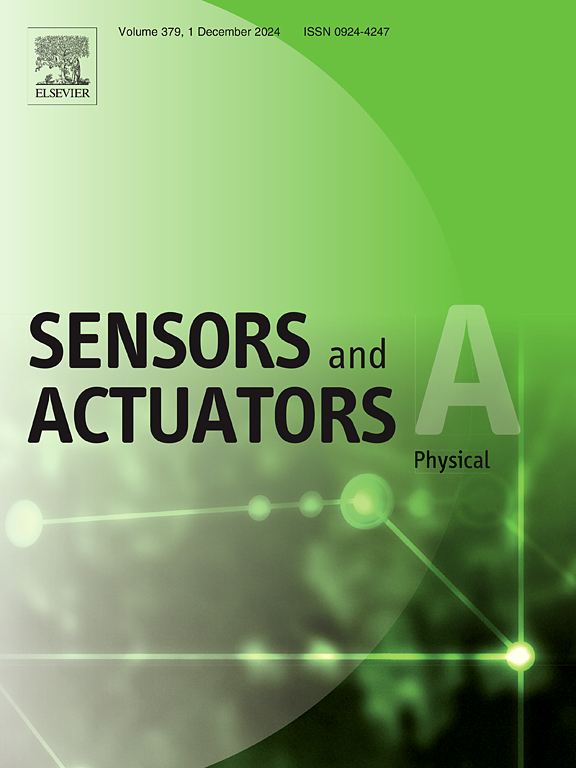An intelligent tire force estimation correction method based on wheel spoke strain
IF 4.1
3区 工程技术
Q2 ENGINEERING, ELECTRICAL & ELECTRONIC
引用次数: 0
Abstract
The previous research shows that by installing strain sensors in the strain-sensitive areas of the wheel hub, the strain characteristics of the wheel hub can be measured under different operating conditions. Based on the changing patterns of strain characteristics, a basic method for estimating tire forces can be established. However, when the operating conditions change, the accuracy of the tire force estimation obtained from the basic method is low. This study analyses the strain characteristics of the wheel hub under the variations of factors such as tire pressure, vehicle speed and radial load, and finds that tire pressure is an important correction factor for estimating radial forces, while radial load is an important correction factor for estimating longitudinal and lateral forces. An intelligent correction method for estimating tire forces based on wheel hub strain is proposed according to the changing patterns between key correction factors and wheel hub strain characteristics, and it is validated by simulation experiments. The estimation correction method proposed in this paper comprehensively considers the effects of multiple factors on wheel hub strain based on previous research. Therefore, the constructed tire force estimation model can be applied to a wide range of driving conditions with high estimation accuracy. In addition, this paper conducts research on wheel hub strain instead of tire strain, which takes a new approach to tire force estimation and provides valuable references and insights for the development of intelligent tires in the future.
基于轮辐应变的智能轮胎力估算修正方法
前人的研究表明,通过在轮毂的应变敏感区域安装应变传感器,可以测量轮毂在不同工作条件下的应变特性。根据应变特性的变化规律,可以建立估算轮胎力的基本方法。然而,当工作条件发生变化时,通过基本方法获得的轮胎力估算精度较低。本研究分析了轮胎气压、车速和径向载荷等因素变化时轮毂的应变特性,发现轮胎气压是估算径向力的重要修正因素,而径向载荷是估算纵向力和横向力的重要修正因素。根据关键修正因子与轮毂应变特性之间的变化规律,提出了一种基于轮毂应变的智能轮胎力估算修正方法,并通过仿真实验进行了验证。本文提出的估算修正方法在前人研究的基础上,综合考虑了多种因素对轮毂应变的影响。因此,所构建的轮胎力估算模型可适用于多种驾驶条件,且估算精度较高。此外,本文以轮毂应变代替轮胎应变进行研究,为轮胎受力估计提供了一种新的方法,为未来智能轮胎的发展提供了有价值的参考和启示。
本文章由计算机程序翻译,如有差异,请以英文原文为准。
求助全文
约1分钟内获得全文
求助全文
来源期刊

Sensors and Actuators A-physical
工程技术-工程:电子与电气
CiteScore
8.10
自引率
6.50%
发文量
630
审稿时长
49 days
期刊介绍:
Sensors and Actuators A: Physical brings together multidisciplinary interests in one journal entirely devoted to disseminating information on all aspects of research and development of solid-state devices for transducing physical signals. Sensors and Actuators A: Physical regularly publishes original papers, letters to the Editors and from time to time invited review articles within the following device areas:
• Fundamentals and Physics, such as: classification of effects, physical effects, measurement theory, modelling of sensors, measurement standards, measurement errors, units and constants, time and frequency measurement. Modeling papers should bring new modeling techniques to the field and be supported by experimental results.
• Materials and their Processing, such as: piezoelectric materials, polymers, metal oxides, III-V and II-VI semiconductors, thick and thin films, optical glass fibres, amorphous, polycrystalline and monocrystalline silicon.
• Optoelectronic sensors, such as: photovoltaic diodes, photoconductors, photodiodes, phototransistors, positron-sensitive photodetectors, optoisolators, photodiode arrays, charge-coupled devices, light-emitting diodes, injection lasers and liquid-crystal displays.
• Mechanical sensors, such as: metallic, thin-film and semiconductor strain gauges, diffused silicon pressure sensors, silicon accelerometers, solid-state displacement transducers, piezo junction devices, piezoelectric field-effect transducers (PiFETs), tunnel-diode strain sensors, surface acoustic wave devices, silicon micromechanical switches, solid-state flow meters and electronic flow controllers.
Etc...
 求助内容:
求助内容: 应助结果提醒方式:
应助结果提醒方式:


